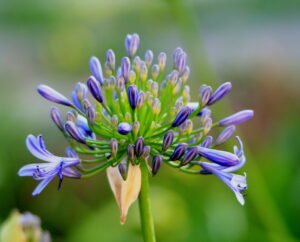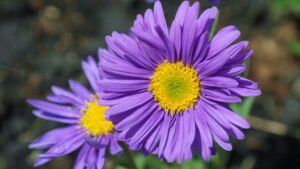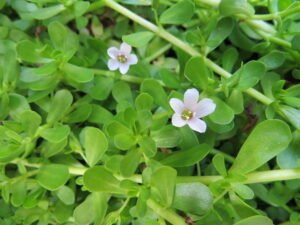Abelia : How To Plant And Care For Abelia Shrub

Photo by Bri Weldon on flickr license
Abelia is a versatile and attractive flowering shrub that can enhance the beauty of your garden. Abelia is an ornamental genus of plants that belongs to the honeysuckle family, Caprifoliaceae. It is known for their attractive foliage and beautiful flowers, making them popular choices for gardens and landscaping. This article explains in detail how to plant and care for Abelia.

Abelia genus currently consists of about 6 different species, which are native to China, Taiwan, and Vietnam.
Abelia plants are versatile in terms of their growth habit. They can be grown as shrubs, hedges, or even trained into small trees. This flexibility makes them suitable for different garden styles and sizes.
Facts About Abelia
Abelia was first discovered in the mid-19th century by a Scottish botanist named Dr. Clarke Abel, who was exploring the regions of China and India. He named the plant after himself, and thus the genus Abelia was born. Since then, several species and hybrids of Abelia have been developed, each with its unique characteristics and charm.
Abelia is a deciduous or evergreen shrub, depending on the variety. It typically grows to a height of 3 to 6 feet, with a spread of 4 to 8 feet. The leaves of Abelia are usually ovate or elliptical, with a glossy texture and serrated edges. The flowers are tubular and come in various shades of white, pink, and lavender. Pollinators such as butterflies and bees find them very appealing.
One of the most remarkable features of Abelia is its long blooming period. Depending on the variety, Abelia can bloom from late spring to early fall, providing a continuous display of color in your garden. The flowers are not only visually appealing but also emit a sweet fragrance that adds to the overall charm of the plant.
Abelia plants are generally hardy in Zones 4 to 11. This means they can tolerate a wide range of temperatures, from cold winters to hot summers. However, it’s important to note that specific varieties of abelia may have slightly different zone requirements, so it’s always a good idea to check the specific recommendations for the variety you are interested in.
FAQ About Abelia
Can Abelia plants be grown in containers?
Yes, Abelia plants can be grown in containers, making them a versatile choice for small gardens, balconies, or patios. When growing Abelia in containers, make sure to choose a large enough pot with good drainage. Use a well-draining potting mix and water the plants regularly, allowing the soil to dry out slightly between waterings. Fertilize the plants with a slow-release fertilizer according to the package instructions.
When do Abelia plants bloom?
Abelia plants typically bloom from late spring to early fall, depending on the variety and climate. The flowers are usually fragrant and come in shades of white, pink, or pale purple. The blooming period can vary slightly depending on the specific species or cultivar.
Are Abelia plants deer resistant?
Yes, Abelia plants are considered to be deer resistant. Deer tend to avoid plants with fragrant foliage or flowers, and Abelia falls into this category. However, it’s important to note that no plant is completely deer-proof, and hungry deer may still nibble on Abelia if food sources are scarce.
Can Abelia plants be used for hedges?
Yes, Abelia plants can be used for hedges. Their dense foliage and compact growth habit make them suitable for creating privacy screens or defining boundaries in the garden. When using Abelia for hedges, plant them close together to encourage a dense growth pattern. Regular pruning will help maintain the desired shape and size of the hedge.
Are Abelia plants drought tolerant?
While Abelia plants are not considered to be highly drought tolerant, they can withstand short periods of dryness once established. However, prolonged drought can stress the plants and affect their overall health and appearance. It’s best to provide regular watering, especially during dry periods, to keep Abelia plants healthy and thriving.
How big do abelia get?
When it comes to their size, Abelia plants can vary depending on the specific variety and growing conditions. However, most Abelia shrubs typically reach a height and width of around 3 to 6 feet.
How long does abelia live?
The lifespan of an Abelia can vary depending on various factors such as the specific species, growing conditions, and maintenance. On average, Abelias can live for around 10 to 15 years. However, with proper care and favorable conditions, some Abelias have been known to live up to 20 years or more.
Famous Varieties of Abelia
There are several famous varieties of Abelia that are popular among gardeners and landscaping enthusiasts. Each variety has its own unique characteristics and can add beauty and charm to any garden or landscape. Let’s explore some of these stunning varieties:
Abelia x grandiflora
Abelia x grandiflora, also known as Glossy Abelia, is one of the most popular varieties of Abelia. It is a hybrid between Abelia chinensis and Abelia uniflora. This variety is known for its glossy, dark green leaves and abundant clusters of small, fragrant white flowers. It is a versatile shrub that can be used as a hedge, border plant, or in mixed plantings. Abelia x grandiflora is also known for its long blooming period, from spring to fall, which adds color and interest to the garden throughout the growing season.
Abelia mosanensis
Abelia mosanensis, commonly known as Fragrant Abelia, is another famous variety of Abelia. It is native to Korea and China and is prized for its fragrant pink flowers that bloom in late spring. The flowers of Abelia mosanensis have a sweet, citrus-like scent that attracts butterflies and bees. This variety is also known for its attractive bronze-colored foliage in the fall, which adds a touch of warmth to the garden. Abelia mosanensis is a great choice for adding fragrance and color to shady areas of the garden.
Abelia schumannii
Abelia schumannii, also known as Schumann’s Abelia, is a lesser-known variety of Abelia that is worth mentioning. It is native to Mexico and is characterized by its compact growth habit and small, light pink flowers. Abelia schumannii is a great choice for small gardens or containers, as it stays relatively compact and does not require much space. This variety is also known for its attractive bronze-colored foliage in the fall, which adds a touch of elegance to the garden. Abelia schumannii is a low-maintenance shrub that is easy to grow and care for.
Abelia triflora
Abelia triflora, commonly known as Himalayan Abelia, is a unique variety of Abelia that is native to the Himalayan region. It is known for its upright growth habit and clusters of small, white flowers that bloom in late summer. The flowers of Abelia triflora are followed by small, red berries that attract birds. This variety is also valued for its attractive, serrated leaves that turn reddish-purple in the fall. Abelia triflora is a great choice for adding vertical interest and late-season color to the garden.
Abelia floribunda
Abelia floribunda, also known as Mexican Abelia, is a beautiful variety of Abelia that is native to Mexico and Central America. It is known for its pendulous clusters of tubular, pink flowers that bloom from late spring to early summer. The flowers of Abelia floribunda are highly attractive to hummingbirds and butterflies, making it a great choice for wildlife gardens. This variety is also valued for its glossy, dark green leaves and compact growth habit. Abelia floribunda is a versatile shrub that can be used as a border plant, in mixed plantings, or as a focal point in the garden.
How To Plant Abelia
When it comes to planting abelia, there are a few key factors to consider:
Location
Abelia thrives in full sun to partial shade. Pick a spot in your garden that gets at least four to six hours of direct sunlight every day. If you live in a hot climate, some afternoon shade can be beneficial to protect the plant from scorching.
Soil
Abelia prefers well-draining soil that is rich in organic matter. Before planting, enrich the soil with compost or well-rotted manure to increase its fertility and drainage. Avoid heavy clay soils, as they can cause waterlogged conditions that are detrimental to the plant’s health.
Planting Process
Follow these steps to plant abelia:
- Create a hole that is exactly as deep and twice as wide as the plant’s root ball.
- Carefully take the plant out of its container, making sure to untangle any knotted roots.
- Make sure the top of the root ball of the plant is level with the surrounding dirt before inserting it into the hole.
- Refill the hole with soil, being careful to compact it around the roots.
- To help the soil settle and remove any air pockets, give the plant lots of water.
How To Care For Abelia
Once you have planted your abelia, it is important to provide it with the proper care to ensure its health and vitality. Here are some tips for caring for abelia:
Sunlight
Abelia thrives in full sun to partial shade, so it’s important to choose a spot in your garden that receives at least 6 hours of direct sunlight each day.
Watering
Watering abelia plants on a regular basis is necessary, particularly in their first year of growth. Water deeply once or twice a week to encourage deep root development. Avoid overwatering as this could lead to the decomposition of the roots. Keep an eye on the soil’s moisture content and modify your watering plan as necessary.
Mulching
Applying a layer of organic mulch around the base of the abelia plant can help conserve moisture, suppress weed growth, and regulate soil temperature. Use a 2-3 inch layer of mulch, such as wood chips or shredded bark, and ensure that it does not touch the stem of the plant.
Fertilizing
Fertilizing your Abelia can help promote healthy growth and vibrant blooms. Fertilization is best done in the early spring, before the onset of new growth. Pick a slow-releasing fertilizer that is balanced, and apply it according to the application rates recommended by the manufacturer.
Alternatively, you can use organic fertilizers such as compost or well-rotted manure. Apply a layer of organic matter around the base of your Abelia, taking care not to pile it up against the stem. This will provide a slow release of nutrients as the organic matter breaks down.
Pruning
Pruning is an important part of caring for Abelia, as it helps maintain its shape and promote healthy growth. The best time to prune Abelia is in late winter or early spring before new growth begins. First, cut off any branches that are infected, dead, or damaged. Next, shape the plant by pruning it carefully to get rid of any branches that cross or are too close together.
Abelia can be pruned quite hard if needed, but it’s important to avoid cutting into old wood as this can reduce flowering. Regular pruning will also help rejuvenate older plants and encourage the growth of new, vibrant branches.
Pest and Disease Control
Abelia is generally resistant to pests and diseases. Nevertheless, powdery mildew, scale insects, and aphids might infrequently harm it. Regularly check on your plants, and if you see any indications of disease or infestation, take the necessary measures. In most cases, a strong blast of water or the application of insecticidal soap can help control pests.
Winter Care
Abelia is generally hardy and can tolerate cold temperatures, but some varieties may require protection in colder climates. If you live in an area with harsh winters, consider applying a layer of mulch around the base of your Abelia to help insulate the roots and protect them from freezing.
In areas with heavy snowfall, gently brush off any accumulated snow from the branches to prevent them from breaking under the weight. Shaking the branches could lead to harm, so try to avoid it.
Planting and caring for abelia can be a rewarding experience. By providing the right growing conditions and following the proper care guidelines, you can enjoy the beauty of this versatile shrub in your garden or landscape. Remember to choose a suitable location, prepare the soil properly, and provide adequate water, mulch, pruning, and fertilization. With a little effort and attention, your abelia plants will thrive and bring joy for years to come.





